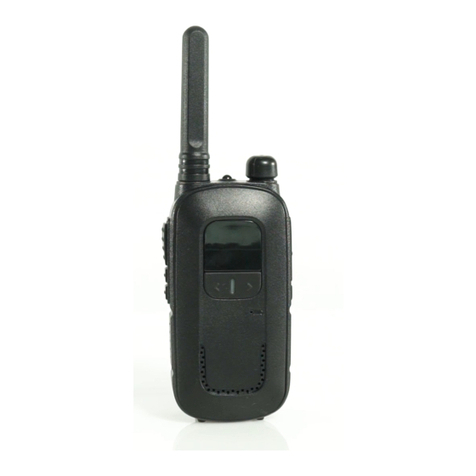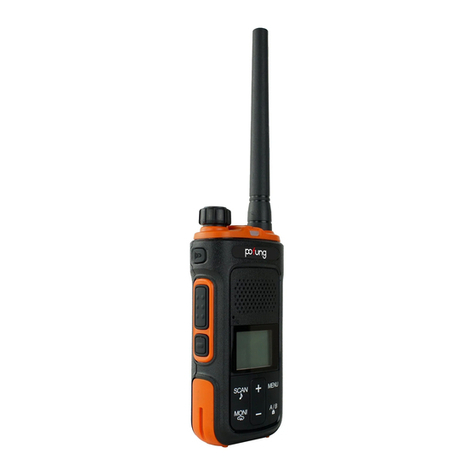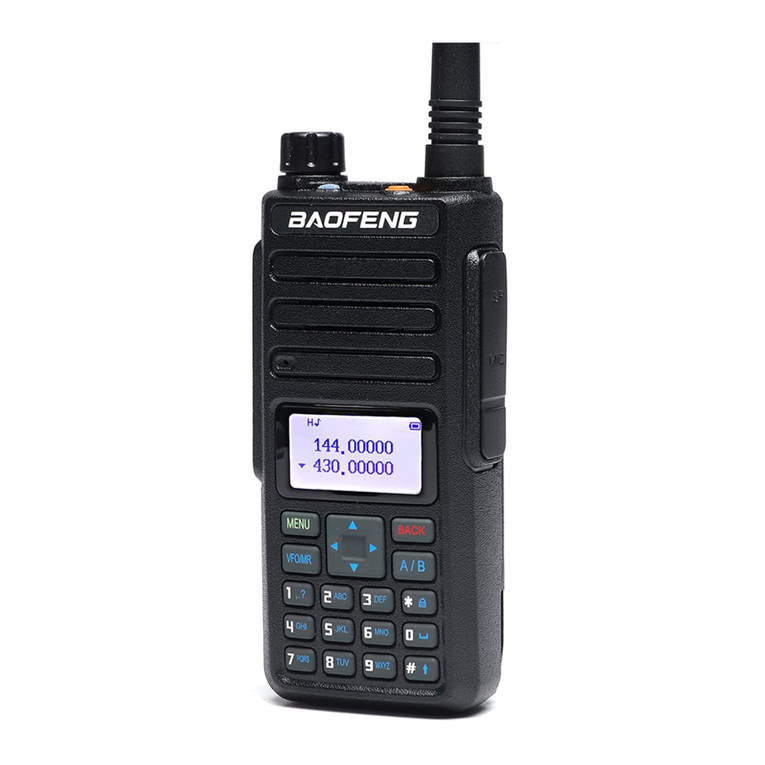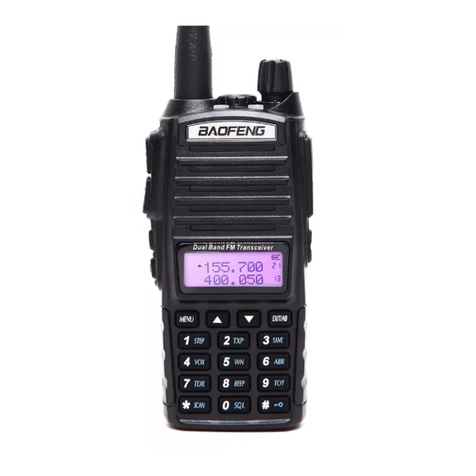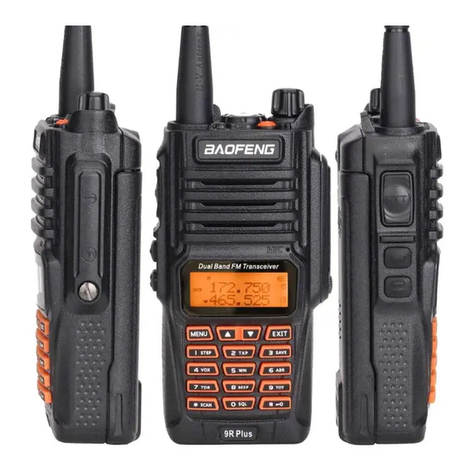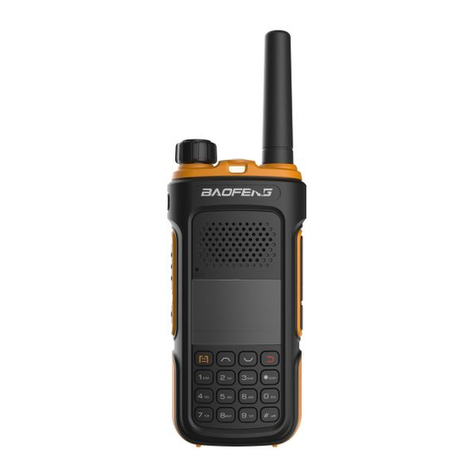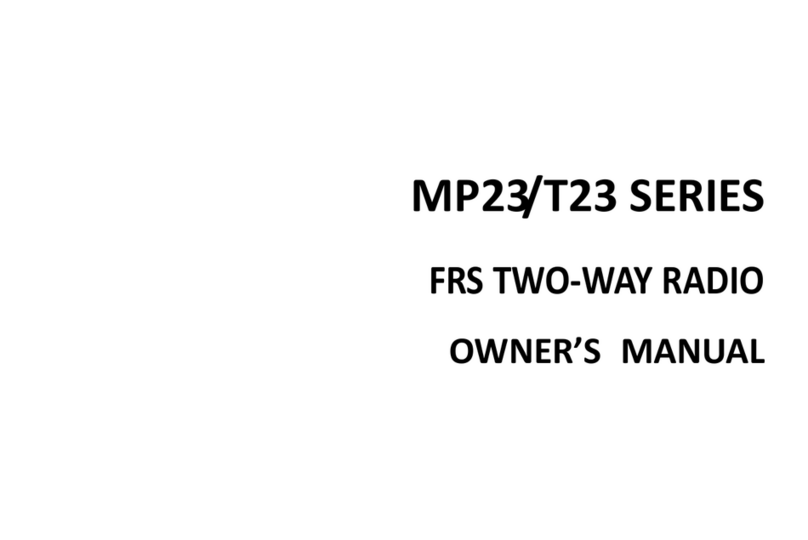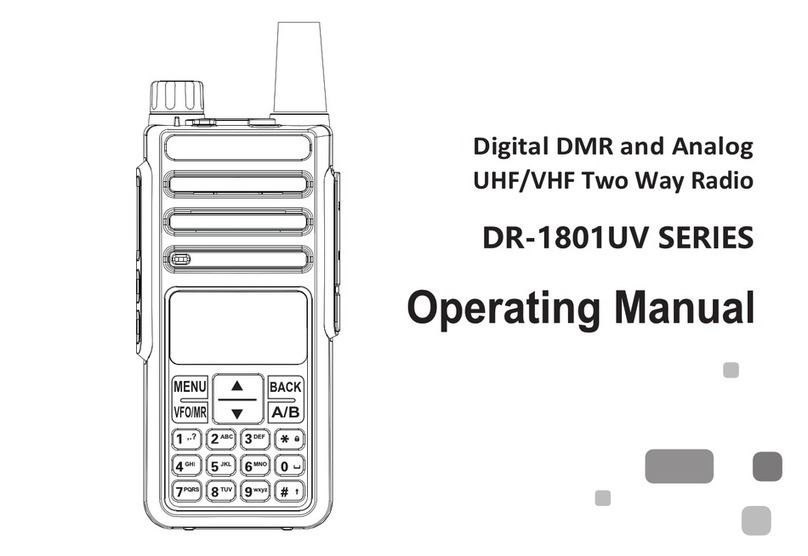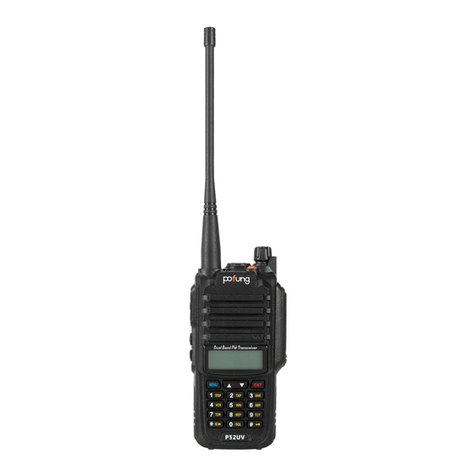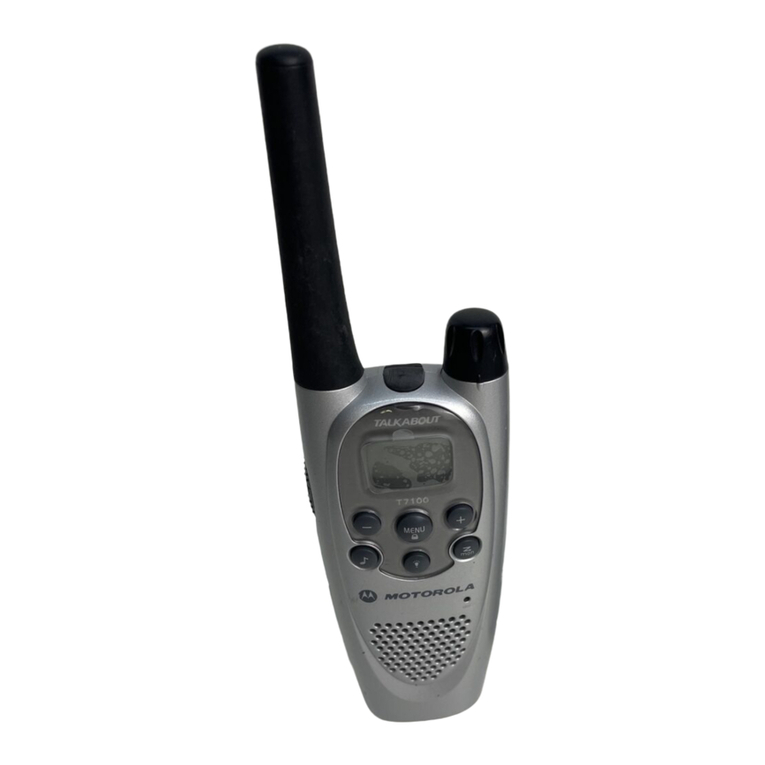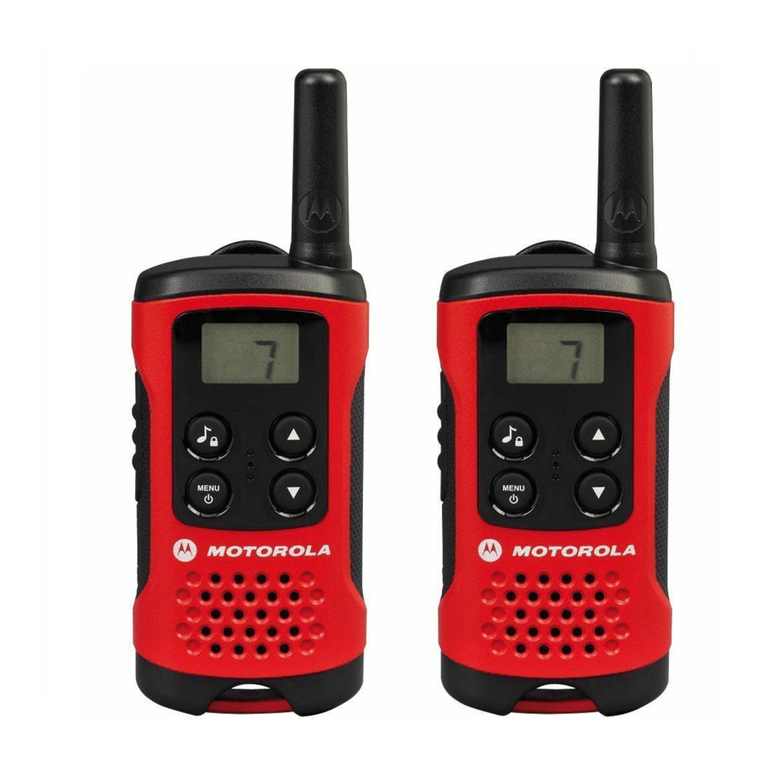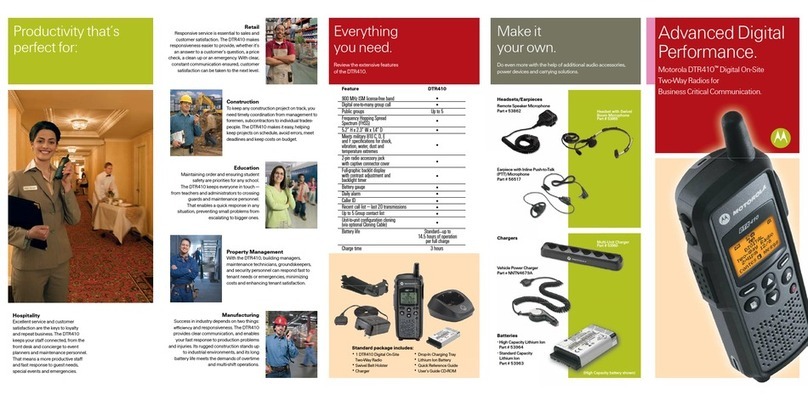
Appendix B. –Trouble shooting guide
You cannot turn on the radio.
The battery may be installed improperly.
Remove and reattach the battery.
The battery power may run out.
Recharge or replace the battery.
The battery may suffer from poor contact caused by
dirty or damaged battery contacts.
Clean the battery contacts or replace the
battery.
During receiving, the voice is weak
or intermittent.
The battery voltage maybe low.
Recharge or replace the battery.
The volume level may be low.
The antenna maybe loose or maybe installed
incorrectly.
Turnoff the radio, and then remove and
reattach the antenna.
The speaker maybe blocked.
Clean the surface of the speaker.
You cannot communicate with
other group members.
The frequency or signaling type maybe inconsistent
with that of other members.
Verify that your TX/RX frequency and
signaling type are correct.
You may be too far away from other members.
Move towards other members.
You hear unknown voices or
noise.
You may be interrupted by radios using the same
frequency.
Change the frequency, or adjust the
squelch level.
The radio in analog mode maybe set with no
signaling.
Request your dealer to set signaling for
the current channel to avoid interference
You are unable to hear anyone
because of too much noise and
hiss.
You may be too far away from other members.
Move towards other members.
You may be in an unfavorable position. For
example, your communication may be blocked by
high buildings or blocked in an underground area.
Move to an open and flat area, restart the
radio, and try again.
It may be the result of external disturbance (such as
electromagnetic interference).
Stay away from equipment that may
cause interference.
The radio keeps transmitting.
VOX may be turned on or the headset is not
installed in place
Turn off the VOX function. Check that the
headphones are in place.
The keypad may not work temporarily.
NOTE: If the above solutions cannot fix your problems, or you may have some other queries, please contact your dealer
for more technical support.
